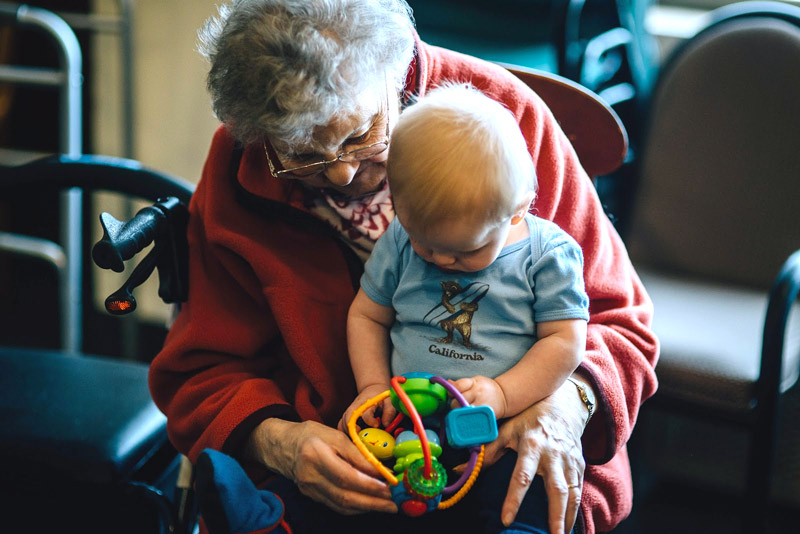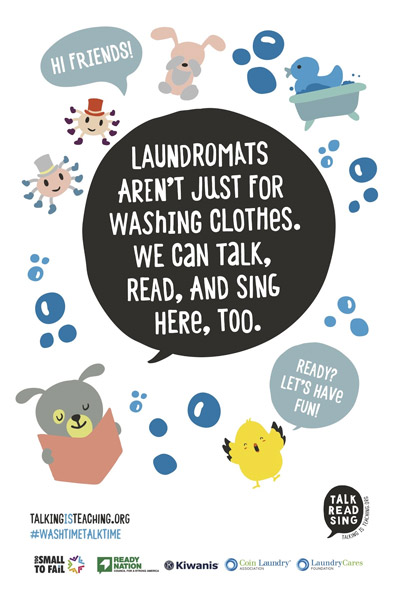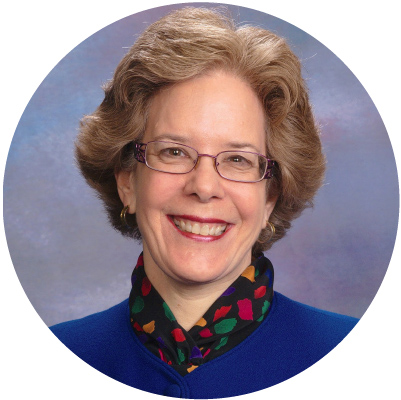 10 Examples of New Innovative Models
10 Examples of New Innovative Models
A SOCAP Guest Post By Dr. Sara Watson, Global Director, ReadyNation/ReadyNation International
At SOCAP17, we featured investments in early childhood education through a guest-curated Spotlight by Gary Community Investments. This issue area continues to attract innovative entrepreneurs and funders, and in November 2018 ReadyNation will gather business and civic leaders from around the world at the Global Business Summit on Early Childhood in New York City to advance the conversation.
One of the most exciting trends in solving widespread problems is combining business practices and social goals. Variously captured as social innovation/entrepreneurship, or social enterprise/impact financing, this idea is applying the practices or resources of for-profit businesses to address social problems. Policy areas that can’t be solved in the private market may still need large-scale public investments. But even those can be helped by innovative methods of financing that are sustainable and involve new players in the fight to improve national and global well-being.
While there are many exciting examples of innovation in certain fields – renewable energy, consumer products, and agriculture – one field has been somewhat absent but is starting to catch on. Early childhood development – providing health care, education, parental supports and other services to children before primary school entry – has been shown to produce tremendous, life-long benefits in adolescent and adult well-being. This topic has grown in visibility with its prominence as part of four United Nations Sustainable Development Goals.
There are challenges to using this approach to expand services for young children. Costs are concentrated and short-term; benefits are diffuse and long-term. There’s not a lot of money in the field already to move around, with early educators being some of the lowest average salaries among professional staff.
However, exciting examples are emerging, which will soon be greatly encouraged by a variety of new initiatives, especially using prizes or challenges to spur innovation. Gary Community Investments (a B Corporation), in partnership with OpenIDEO, has launched a new prize for innovative solutions to tough challenges in the early childhood sector. Part of the focus is bringing new talent from entrepreneurs to the field. Another example is the NewSchools Venture Fund Early Learning Challenge. According to Omidyar’s Amy Klement, a number of philanthropic funders, including Omidyar Network, are collaborating to launch a new early childhood studio to help accelerate innovative efforts. Early childhood social entrepreneur Joe Waters created Capita to spur innovative ideas to improve child and youth outcomes.
10 Examples of Innovative New Models
Some fledging efforts may not even realize they are part of this exciting trend – it’s just good business – while others very much spring from this burgeoning movement. Below is just a sampling of the wide variety of emerging models (note some innovations may fit into a variety of categories).
1. Cross-subsidies within the early childhood sector.
Australia (Goodstart Early Learning) and the U.K. (London Early Years Foundation) have major child care operations which are social enterprises returning profits from customer revenues to subsidize rates, provide specialized programs and/or fund centers for lower-income clients. Primrose Schoolsin the U.S. incorporates many different strategies to support quality early education in areas of need including in-kind and financial donations, partnerships with local and national children’s charities and by providing staff with volunteer hours to serve in their communities. In accordance with their Mission and Values, for-profit play and recreation equipment manufacturer PlayCorealso incorporates strategies to support quality outdoor environments for underserved communities, including equipment donations through their Day of Caring program, providing matching funds through seasonal grant programs, offering scholarly best-practice design and research guidebooks at no charge, and allowing employees to volunteer hours to build play and recreation spaces.
2. Innovative financing mechanisms that capture the cost of bad outcomes and use them to pay for early interventions that can prevent them.
This “pay for success” financing, more commonly associated with prison recidivism and homelessness prevention, is also being used to pay for preschool education and parent mentoring programs. The Nonprofit Finance Fund shows 25 projects in some stage of development addressing early childhood. The first model, funding preschool in Utah, just paid its first dividends based on substantially reduced placement of children in special education programs after receiving early education services. The U.S. government just enacted the Social Impact Partnerships to Pay for Results Act, which will provide new capital for these projects (ReadyNation’s parent organization led a coalition of children’s groups to advocate for this bill).
3. Combining different businesses to the benefit of both.
People in nursing homes almost always don’t want to be there and never have enough to do. Young children in child care centers always need more attention and want someone to play with. As with Reese’s peanut butter cups, together they make something special. Providence Mt. St. Vincent nursing home in Seattle shares space with 125 children aged 0-5 at their Intergenerational Learning Center, with abundant benefits for both populations.

The Intergenerational Learning Center at Providence Mount St. Vincent in West Seattle. Photo credit Devon Michelle Photography.
4. Using a for-profit business platform (not in the early childhood field) to both convey information and attract parent customers.
QuikTrip, a multi-state convenience store and gasoline marketer, incorporates early literacy messages throughout its social media channels, to attract and educate parent customers. Music streaming service Spotify has a young children’s playlist that is focused on language development and also includes celebrity voice overs that prompt parents to engage with their kids. The Coin Laundry Association’s “Wash Time is Talk Time” campaign works with its member laundromats (as well ReadyNation and Kiwanis International) to create reading corners that are also platforms for agencies to offer access to services. While the laundromats get more customers, families get easy access to benefits in places they already regularly visit in their daily lives.

An example from The Coin Laundry Association’s “Wash Time is Talk Time” campaign.
5. Using a for-profit business platform in the early childhood field to also provide a social good.
ParentPowered, for example, sends text messages to families with parenting tips. Companies like Brightwheel, Learning Genie and Kaymbu are innovating in the field of formative assessment in early learning centers. Blueprint4summer.com is a free service based in St. Louis, created by the founder of Build-a-Bear, that helps parents find good summer experiences for their children.
6. Using nonprofit platforms that sell products that advance the nonprofit’s mission while also making money.
The founder of Build-a-Bear company, Maxine Clark, created many options in the company to share profits with non-profit causes – for example, the company had a literacy bear whose profits went to First Book, and they have had an array of bears that mark specific childhood diseases, such as cancer, where the profits go to the relevant charity. The St. Louis Science Center has a Build-a-Bear workshop inside the facility that pays rent to the Center, and kids can dress the bears as scientists, such as astronauts or archaeologists, and consider science careers.
7. Prioritizing early childhood in corporate social responsibility practices.
While CSR actions are not new, early childhood is not a common priority. However, a few companies have decided this topic is a good fit for their corporate citizenship priorities. PNC Financial Services Group made the largest commitment in recent decades, making early childhood its top priority through its PNC Grow Up Great® initiative. More recently Vanguard has developed a corporate initiative on early childhood. KPMG’s Family for Literacy project, with social enterprise First Book, includes early childhood in its outreach. Unilever’s Dirt is Good brand emphasizes encouraging children to have access to healthy outdoor play, including through the Outdoor Classroom Day (May 17, 2018).
8. Using business practices to cut costs and promote innovation.
The shared services arrangement sponsored by the Merage Foundation through Early Learning Ventures is a great example of using business practices to promote efficiencies and reduce the cost of services.
9. Businesses providing their expertise and resources to help the early childhood field.
Barrows, a global retail design firm, has initiated a program out of their South African operations that utilizes excess business inventory across their design, manufacturing and distribution services to create and distribute early childhood materials.
PwC Australia, which is part of the PricewaterhouseCoopers global accounting network, is providing pro bono economic analysis to illustrate the employment and increased productivity impacts of increased child care subsidies and quality of care and learning. LEGO has developed the LEGO Serious Play process to use play to encourage innovation, which is being used by nonprofits (such as UNICEF) as well as by for-profit companies.
10. Creative cross-sector and public-private partnerships.
U.S. non-profit KaBOOM! brought together support from the Robert Wood Johnson Foundation and Target to launch the Play Everywhere Challenge, a national competition that awarded $1 million in prizes for the best replicable, scalable innovations in city redevelopment and design that integrate play into the daily lives and routines of kids and families – ideas that transform sidewalks, bus stops, vacant lots, barber shops and beyond into vibrant places to play, learn and grow. In addition to funding, Target lent its design expertise to assist applicants to develop creative ideas.
More Coming Soon
By this fall, many more examples will be visible. In November 2018, ReadyNation, a business membership organization, will host its next Global Business Summit on Early Childhood, which will feature new models of social innovation to support early childhood. By then Gary Community Investments will also announce its winners along with many other innovative initiatives.
All businesses, economies and societies benefit when young children get a good start in life. These companies and social enterprises are finding innovative ways to both advance their short-term bottom line and support the long-term growth of a productive workforce, customer base and citizenry.
Watch a SOCAP17 session that was part of Gary Community Investments Spotlight Series: The Case For Investing in Early Childhood: Why We Can’t Afford to Wait
 10 Examples of New Innovative Models
10 Examples of New Innovative Models
